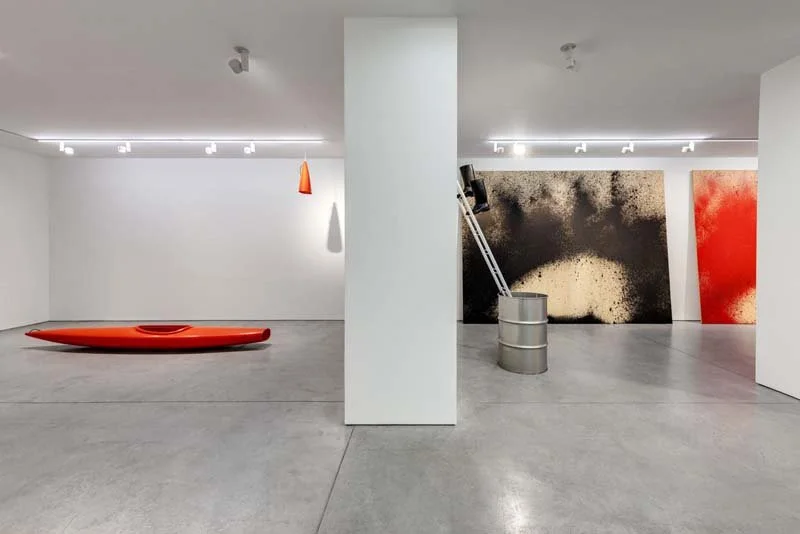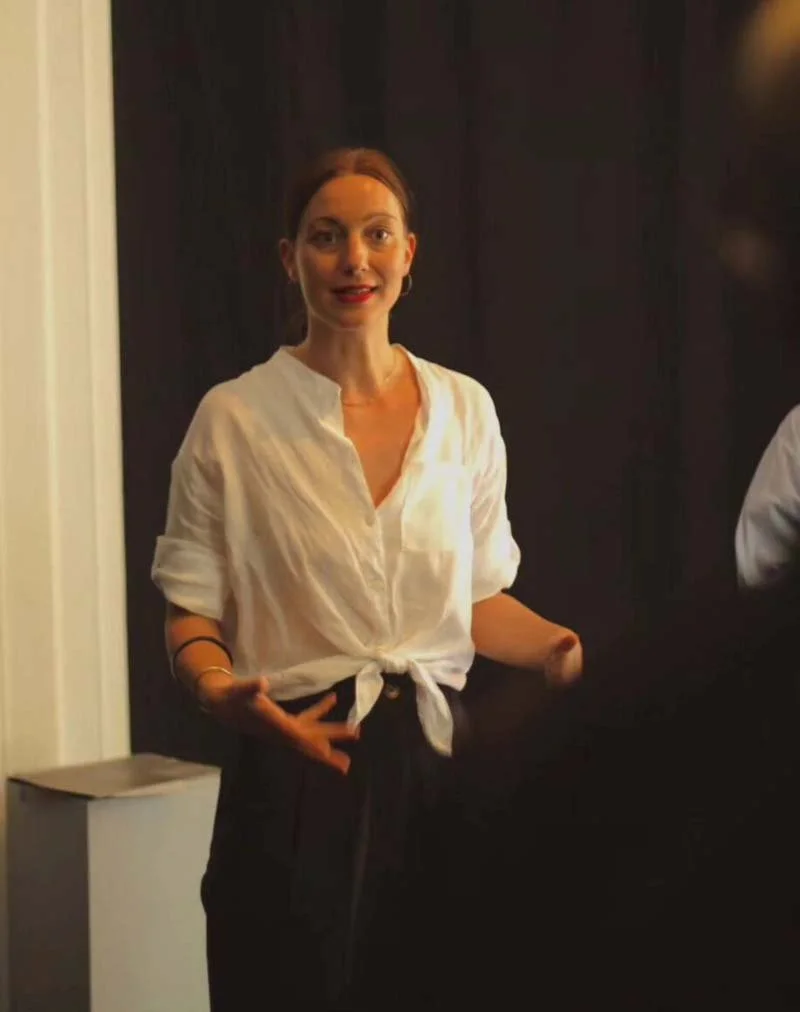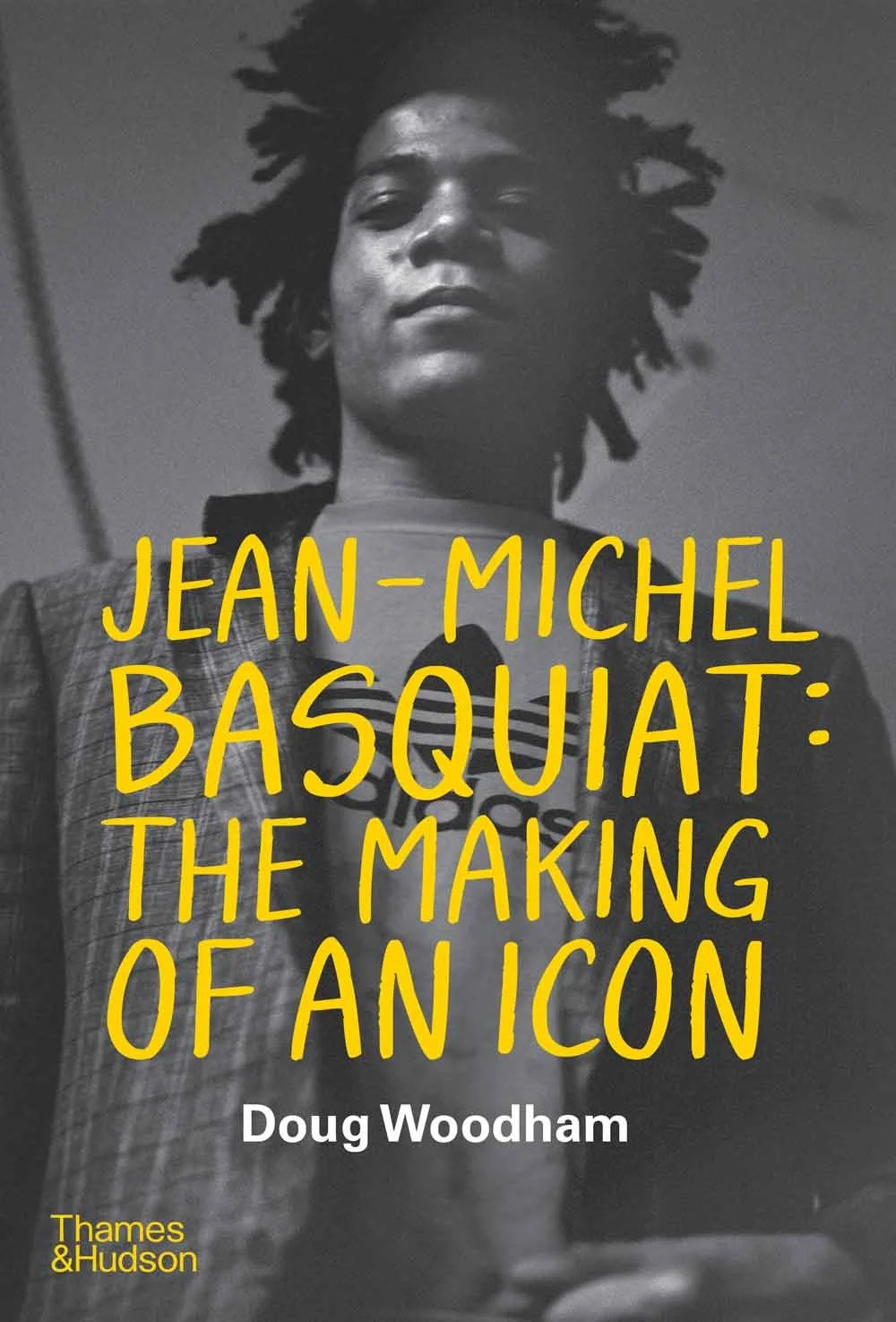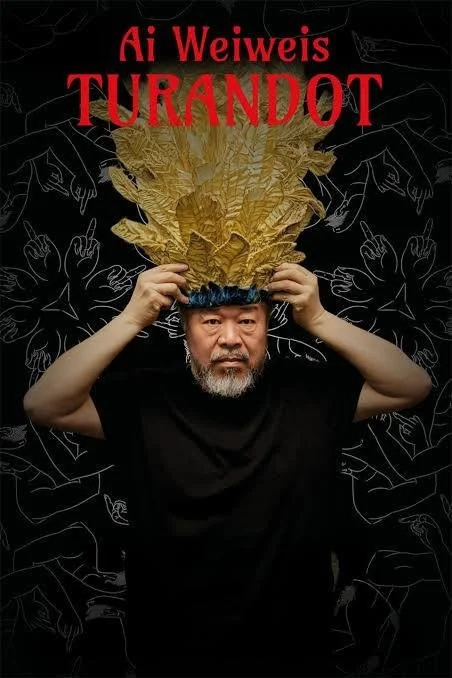olivier antoine · Photo by Romain Darnaud
A Conversation with Olivier Antoine
Founder of Art: Concept
4, passage Sainte-Avoye 75003 Paris, Accès au 8, rue Rambuteau
@galerieartconcept
You were born in a region with a rich artistic legacy. How did that creative environment it influence your approach to art and your thinking about the world? I was born in Nice and raised near St Paul de Vence. I don't know if the history of art on the Côte d'Azur has influenced me, but it's true that it's a region in France where artists have enjoyed staying and enjoying the colors that nature has to offer. Has this given me any particular food for thought? Perhaps.
What first drew you to the world of art? For you, what is the importance of the arts? In fact, it wasn't a work of art that made me fall in love with it, but I was fascinated from an early age by the ability of human beings to invent forms and develop ideas through them. Art shows us the space that separates us, connects us, irritates us. It's a kind of accomplice in my life, art is really everywhere, it allows me to broaden what we call reality.
Can you walk us through a typical day in your life as a gallerist? What part of your work energises you most? Home-bike-gallery-emails-calls-meeting-bike-home but this routine is constently modified by openings, fairs, travels... Working with artists is the most interesting part of my job.
What exhibitions or projects are you working on at the moment? We're preparing an exhibition with Ulla von Brandenburg following her residency in Japan. In the fall we'll present a new body of fungal groth made paintings by Michel Blazy, then a new show with Nina Childress.
Is there a single work of art that continues to resonate with you deeply? Femme nue assise dans un fauteuil by Felix Vallotton, 1897
If you could have a conversation with any artist from history, who would it be? Jerome Bosch
Over your three decades with the gallery, how has your approach to choosing artists evolved? It depends on the moment in the life of the gallery. I don't think I have the same criteria today as when I started. But it seems to me that one constant is the knowledge of the hand and its relationship to the organic, the living. The work must leave plenty of room for interpretation, so that the public can form an idea even if it doesn't correspond to the artist's intention.
A great thing about living in Paris is being surrounded by beauty.
Your gallery opens its doors daily, encouraging dialogue. What do you see as your role in making contemporary art more accessible or engaging with public discourse? We're open free of charge every day of the week to exchange ideas with the public, because we know that galleries are intimidating. This exchange is essential to the understanding of new artistic languages, as it enables us to better grasp contemporary issues.
Can you share a project or exhibition that challenged you professionally and how you overcame those challenges? How do you balance practical constraints with creative vision? There are many exhibition projects that have been a challenge. Last year, for Art Basel Paris, we decided to change the entire booth four times. This meant we had to prepare for the fair by installing the works at the gallery to photograph them, then organize a rotation of art handlers to install and reinstall the booths every day and evening. The result was an opportunity to create reading keys in the program, creating a dialogue between artists with different backgrounds. Thank you all for this wonderful project :). To achieve your goals, you have to be creative, especially when funds are limited.
When artists come to you with exhibition ideas, how do you work together to bring those visions to life? It's the artists who give us their exhibition ideas, and it's up to us, the gallery, to ensure that the result is as close as possible to what they envisioned. When this isn't possible for structural or financial reasons, we always find a solution; once again, being creative often saves the day.
Your response to community engagement pushes against identity categories. How do you think about audience in a way that resists simplification? It seems to me that you're alluding to the behavior of countries that maintain a division in society. Even if we are very different, we don't have this communitarian feeling in France; we live together, and the gallery's program doesn't seek to touch one person rather than another. It's more about talking to human beings than to a social category.
You’ve taken an unconventional path—starting your gallery without formal art-world experience. Looking back, what helped you find your footing, and what would you share with someone starting today? I have a very particular background, as I didn't study art or work in a gallery or institution before opening my own gallery. I made a lot of mistakes, which forced me to observe different gallery models and understand how networks and influences work. Today, our profession has changed, and I'm not sure I can give good advice, because it seems to me that the freedom to do what you want, to be the bearer of new ideas against the current, no longer exists. We're obliged to act according to industry standards, the art market is based on the greed of NY landlords, we have to be competitive and therefore renew the program to find new clients, terms and attitudes that I thought would never belong in the art world. For me, opening a gallery was like opening a book whose history is written by turning the pages. Nowadays, it's simply a business, because the networks of endorsements and patronage are all about profit, not sharing knowledge. That's the whole problem today, whether or not to take part in the big fairs.
You’ve shown concern about the art world’s environmental impact. How do you approach sustainability in your own gallery’s operations? We try to work as locally as possible with artists who care about our relationship with the environment. When these artists are abroad, we try to get them to work locally, taking advantage of the many French craftmen. When we can, we ship by truck in soft packaging. We've even advised LA shippers to make travel frames out of cardboard rather than wood. But this subject is a joke in our business, because nobody really cares. When you take a plane to an opening on the other side of the ocean, what can you expect from the art world? I asked myself questions about post-industrial art in a two-part exhibition called “Indus2” and 3. Nobody found this exhibition interesting; what's more interesting is the price of a work or the star who bought it, no matter how it was made and shipped.
AI is changing everything - the way we see the world, creativity, authorship, our ideas of beauty. What are the opportunities for incorporating AI, technology, digital platforms and online exhibitions evolving in the future of art galleries? What is the importance of human art and handmade creative works over industrialized creative practices? The answer is in your question, and I don't see anything in it other than conformism based on Western data. It's everyone's choice, but for my part, programming gives pride of place to craftsmanship and manual skills. I find that a successful work generates its own energy.
Exploring ideas, art, and the creative process connects me to…
the infinite space of the unknown.




















































































